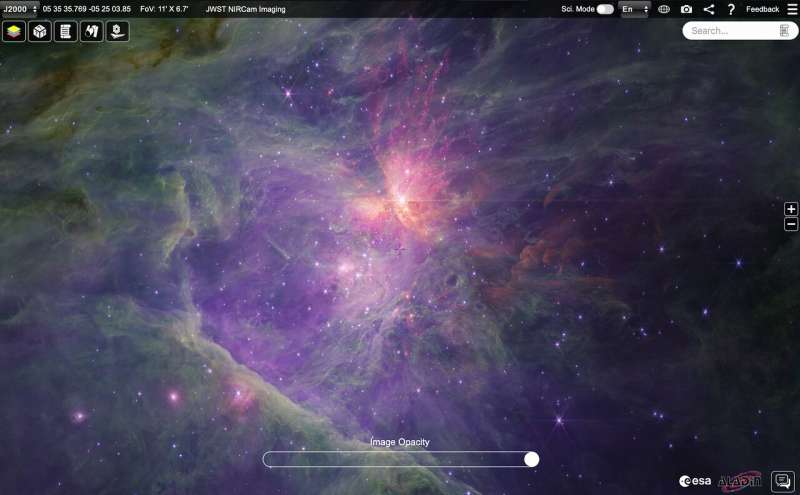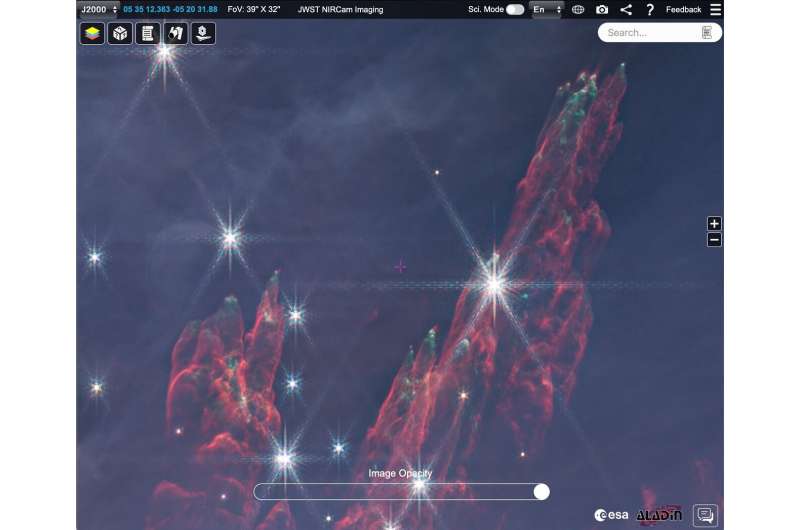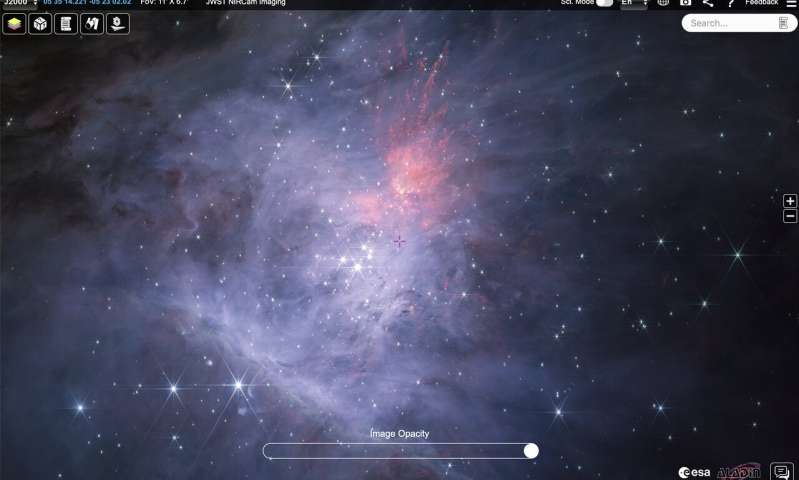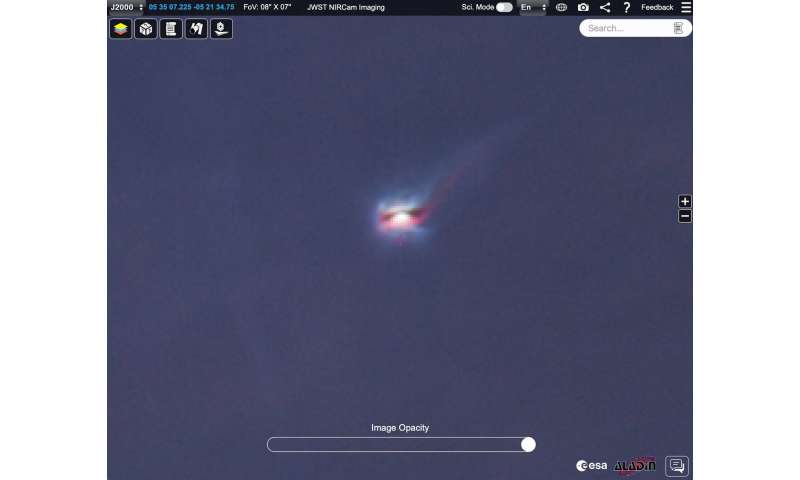This article has been reviewed according to Science X's editorial process and policies. Editors have highlighted the following attributes while ensuring the content's credibility:
fact-checked
trusted source
proofread
Webb's wide-angle view of the Orion Nebula is released on ESASky

New images of the Orion Nebula from the NASA/ESA/CSA James Webb Space Telescope have been included in ESA's ESASky application, which has a user-friendly interface to visualize and download astronomical data.
One of the brightest nebulae in the night sky is Messier 42, the Orion Nebula, located south of Orion's belt. At its core is the young Trapezium Cluster of stars, the most massive of which illuminate the surrounding gas and dust with their intense ultraviolet radiation fields, while protostars continue to form today in the OMC-1 molecular cloud behind.
The nebula is a treasure trove for astronomers studying the formation and early evolution of stars, with a rich diversity of phenomena and objects, including: outflows and planet-forming disks around young stars; embedded protostars; brown dwarfs; free-floating planetary mass objects; and photodissociation regions—the interface regions where the radiation from the massive stars heats, shapes and influences the chemistry of the gas.

The new imaging was obtained with Webb's near-infrared camera, NIRCam, and has been made into two mosaics, one each from the short and long wavelength channels.
These are among the largest Webb mosaics observed to date and given the high resolution and large area, they have been incorporated in ESASky to enable easy exploration of the plethora of interesting astronomical sources contained within them. The short-wavelength mosaic maximizes Webb's angular resolution to reveal beautiful details in disks and outflows, while the long-wavelength one showcases the intricate network of dust and organic compounds called polycyclic aromatic hydrocarbons. We encourage you to explore these images to see what hidden treasures you can find.
-

This image shows a short-wavelength NIRCam mosaic of the inner Orion Nebula and Trapezium Cluster. It shows a region 4 light years across, slightly less than the distance between the sun and our nearest neighbor, Proxima Centauri. Credit: NASA, ESA, CSA Science leads and image processing: M. McCaughrean, S. Pearson -

This is a screenshot from the ESA Sky platform showing d072-135, one of the interesting objects in the short-wavelength mosaic. This shows a circumstellar disk as a silhouette against the background nebula, being heated and evaporated by the Trapezium stars, forming a colorful tail of molecular and ionized gas. Credit: NASA, ESA, CSA Science leads and image processing: M. McCaughrean, S. Pearson
More information: Samuel G Pearson et al, Jupiter Mass Binary Objects in the Trapezium Cluster, arXiv (2023). DOI: 10.48550/arxiv.2310.01231 , arxiv.org/abs/2310.01231
Provided by European Space Agency





















